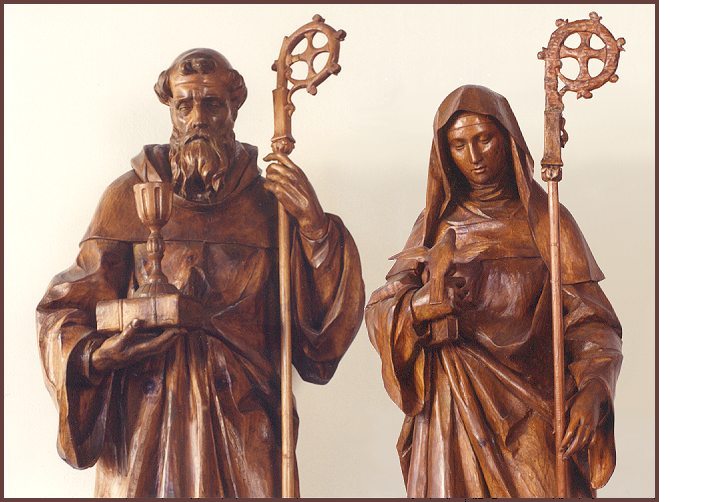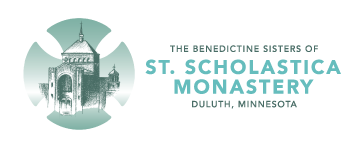Benedictines throughout the world follow the Rule of St. Benedict. Developed by St. Benedict in the sixth century, the Rule is a practical and spiritual guide to living according to Gospel teachings. Though written for monastics, it helps us all, religious and lay, to find God in the ordinary circumstances of daily life.
St. Benedict was born in Italy in 480, as the Western Roman Empire was collapsing. Disillusioned with the corrupt life in Rome, he left and went first to the countryside near Subiaco to live as a hermit. His growing reputation for holiness attracted others who became his disciples. He founded thirteen monasteries in the local countryside where monks lived simply in small communities, held all things in common, and followed a life of prayer, study, and work.
Benedict and a few of his most devoted followers then went to the town of Cassino, about 70 miles southeast of Subiaco, where he built another monastery, Monte Cassino, on a hilltop overlooking the town. There, he and his monks followed a way of life that profoundly influenced the unfolding of history and still speaks to us today. He is considered the founder of western Monasticism. The Church celebrates the Solemnity of St. Benedict on March 21 and his Feast on July 11.
While abbot at Monte Cassino, Benedict wrote his Rule. He based it on his experience in communities he founded, on Sacred Scripture, and on the spiritual writings of earlier monastics. The Rule, considered one of the most important documents of Western civilization, challenges us to a life of ongoing conversion, growth, and inner transformation.
The Rule answers the question, “How ought we to live?” It challenges us to listen to the voice of God in Scripture, in the voice of our spiritual leaders, in each other, and in the circumstances of ordinary life. It describes a holistic life that includes:
- a balance of prayer, work, study, and leisure
- stability and commitment lived in community, in which Christ is seen in each person
- stewardship of all created things which come from the hand of God
- hospitality that receives and cares for each person as Christ
St. Scholastica, patron of the Duluth Benedictines, was the sister of St. Benedict. She founded a monastery for women near Monte Cassino. It is believed that her influence may have softened some of his Rule’s rigors. The Church celebrates the Feast of St. Scholastica on February 10.
All pages of the Rule of St. Benedict used in the website are taken from the hand-written and -illuminated Rule created by +Sister Mary Charles McGough, illustrator, and Meridith Schifsky, calligrapher.

Our Monastery Patrons
Statues of St. Benedict and St. Scholastica stand at the cloister walk entrance to the Monastery. The statues were carved out of white pine by a skilled Bavarian or Saxon craftsman in Europe about the year 1820. Many years later, when they had seen much wear and at a time when wood sculpture had lost popularity in Germany, they were coated with plaster, painted, and exported to America where plaster statuary was in great demand.
Our Community purchased them in 1895, believing them to be made of molded plaster. In 1939 a visiting Italian sculptor recognized their true nature and restored them to their original beauty.

